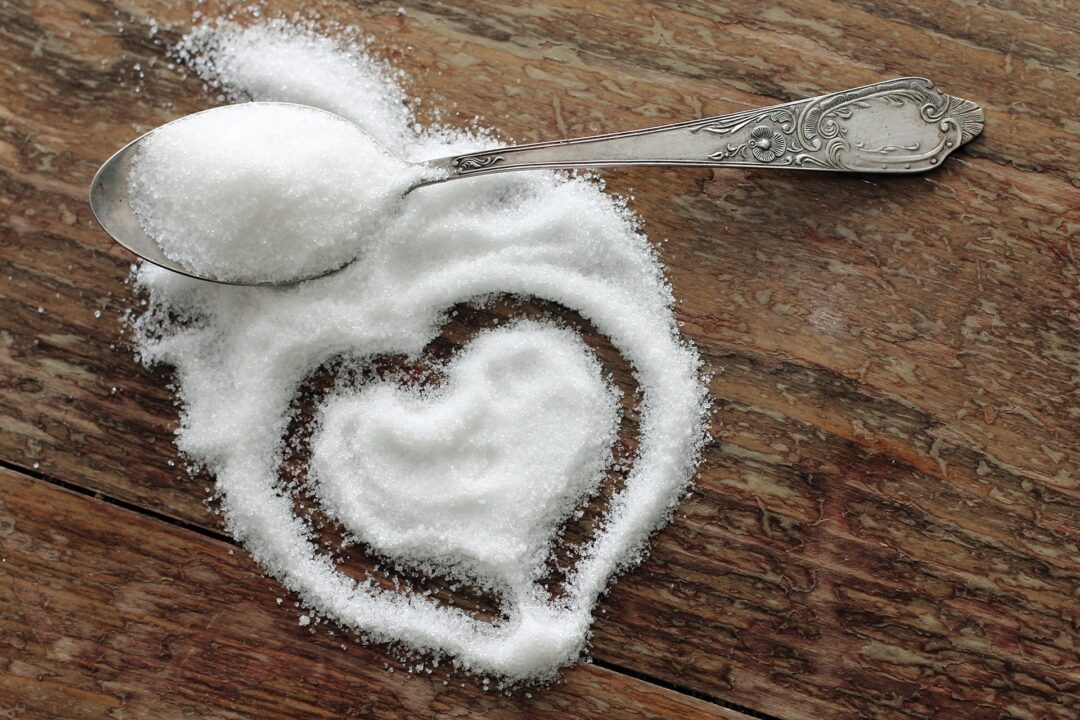Excess sugar is public health enemy #1 and as your customers seem to want to have their cake and eat it too, manufacturers are busily innovating to supply alternative sweeteners.
Part of the heightened awareness is caused by growing government pressure. The U.S. Food and Drug Administration (FDA) has adapted its food labeling rules to require that all added sugars be separated out — giving a clear signal to increasingly vigilant label-reading consumers. While industry concerns about cost prompted FDA to push back the original July 26, 2018 deadline to an as-yet undetermined date, the change is coming.
At the same time, an increasing number of cities and entire countries are introducing taxes on sugar to further push food and beverage makers to look for alternatives. The American Medical Association (AMA) weighed in at its Annual Meeting and adopted a new policy to decrease the amount of sugar Americans consume via sugar-sweetened beverages.
“Excessive sugar consumption has been linked to some of the nation’s most debilitating diseases, and limiting the consumption of sugar-sweetened beverages will go a long way toward helping people prevent the onset of these diseases, improve health outcomes and rein in health costs associated with chronic diseases,” said AMA board member William E. Kobler, MD. The AMA said its position resulted from scientific studies linking sugar-sweetened beverage consumption to afflictions such as coronary artery disease and type 2 diabetes.
“Sugar has quickly become one of the most dubious ingredients on an ingredient panel around the world,” agrees Lauren Williams, director marketing, global sweet and beverage flavors at Sensient Flavors based in Hoffman Estates, IL. “With the increasing global concern over health issues associated with poor diets, now more than ever consumers are steering away from sugar.”
According to a Mintel report issued in June 2017, more than 40% of consumers avoid artificial sweeteners when purchasing healthy food, while 18% of Millennials agree that natural non-nutritive sweeteners are bad for your health (1). That same study discussed at the recent IFT 17 conference in Las Vegas reported 26% of U.S. consumers would like to see more food and beverages using naturally sourced sugar substitutes.
What’s New“Understanding what is most important to the consumer who is likely not interested in a compromise between taste and nutrition is no small task,” Williams adds. “Our label-friendly portfolio has a variety of maskers and sweetness boosters that smooth out the taste or increase the sugar-like mouth feel so low-glycemic products are as delicious as high sugar ones.”
Sensient launched its third generation of Smoothenol masking technology in June. This “masks” off bad tasting notes from sweeteners, she says.
Flavor Health, a standalone brand of parent life sciences firm Chromocell based in North Brunswick, NJ, introduced its Sweet ingredient at IFT that intensifies the sweetness of non-caloric and caloric sweeteners in a product, giving manufacturers the ability to reduce sugar in their products by as much as 50% while providing no bitter off taste. The firm achieves this with a proprietary technology called Chromovort, which is a platform that enables the real-time monitoring of gene expression in living cells, then isolating those cells. For sweetness applications the firm will monitor the way these cells react to various sweet flavors and isolate the cells with the most expression. This also makes the technology ideal for custom applications. Flavor Health has entered into collaborations with Nestle and Coca-Cola.
“It’s exciting to see these companies get involved in it,” says James Restivo, a sales and marketing executive with Suzanne’s Specialties, New Brunswick, N.J., of the big brands. He sees trends ebb and flow as consumers move away from and then back to certain types of sweeteners. One type of sugar growing in popularity is coconut sugar because “it looks better on a label than ‘cane sugar,’ “ Restivo says. “Is it better nutrition? Depends who you ask.”
While cane sugar consists of 98% sucrose, coconut sugar can range from 85% to 98%, making it a pretty comparable selection, Restivo notes.
“Some claim coconut sugar is lower on the glycemic index. I think it’s an arbitrary rating,” Restivo adds, noting that coconut sugar has a distinct flavor profile that has to be worked as an ingredient into a flavor but is something people do seem to like.
According to the Phillipine Department of Agriculture, coconut sugar retains nutrients found in the coconut palm, “including the minerals iron, zinc, calcium and potassium, along with short chain fatty acids, polyphenols and antioxidants that may also provide some health benefits. It contains a fiber called inulin, which may slow glucose absorption and explain why coconut sugar has a lower glycemic index than regular table sugar” (2).
As diabetes grows, the desire for low-glycemic forms of sweetener that create less of a spiking effect in the blood stream does too. Simple carbohydrates can be found in fruits, vegetables and dairy but the movement of the simple carb glucose from the bloodstream into cells for energy is slowed down because of fiber and protein. Substances like syrup, soda, candy and table sugar create more of a spiking effect and are more “addictive” because they act like an immediate reward to the brain.
Reading labels makes for smarter customers as well. According to Nielsen and Label Insight, “there are 206 variations of high fructose corn syrup manufacturers can list on a label. Label Insight found that organic cane sugar syrup, organic agave nectar, honey, chocolate and vanilla extracts are a few examples of natural alternative sweeteners that can be used to sweeten products and still keep within the low glycemic range. Sales of these sweeteners grew 19% in 2016 over 2015 and 200% compared to four years ago” (3).
Stalwart Stevia“Consumers are showing they are more interested in natural, organic, non-GMO, and gluten-free options, as well as options that are ‘free-from’ common allergens,” says Carol May, CEO, Wisdom Natural Brands, Gilbert, AZ, maker of SweetLeaf Stevia Sweetener. “However, the products need to taste good and be a better-for-you choice.”
Not all companies process stevia the same way. “Today, there are some very large differences in stevia, some are artificially made and some use more natural processing,” May adds. “At SweetLeaf, we always use the more natural route to provide the highest-quality stevia products. Most other companies use an alcohol-based extraction process. Because we use a water-based process, our products are free from the taste of solvent artifacts. The water-based extraction process produces a wonderfully sweet, zero-calorie food and beverage ingredient.”
“Right now I see consistently the quality of stevia is improving, which is great for everyone,” says Tanya Kirkland, founder of Stevita Stevia in Arlington, TX, who raised her five children on stevia she grew in the backyard.
Stevita Stevia is venturing into products and has a hard candy it single-sourced out of Brazil that is sweetened with stevia. It’s hoping to also get approval to bring to the U.S. a mudcake that Kirkland describes as a “decadent, sugar-free dessert.”
FlavorHealth for its part is providing other solutions for companies using stevia in their products. The firm’s Sweet ingredient for example can be used in combination with its Bitter Balance ingredient, enhancing the sweetness of products with stevia while also removing any off aftertaste.
Bring on the Buddha FruitGrowing in popularity is monk fruit, which is derived from fruit, unlike stevia, which is derived from a leaf.
Known as “luo han guo” or the “Buddha fruit,” monk fruit is grown in Southeast Asia and has been used for centuries in traditional Chinese medicine. FDA approved its use as a sweetener in 2010.
Both stevia and monk fruit sweeteners can be bitter, meaning it’s important to check the ingredients to see what has been added to make the taste more appealing. The sweetness of monk fruit comes from antioxidants called mogrosides and depending on the amount present, monk fruit extract can be 100 – 250 times sweeter than table sugar (4). Mogroside extracts have shown antioxidant and anti-inflammatory characteristics, inhibiting harmful molecules called reactive oxygen species and preventing DNA damage. (4)
Many manufacturers mix monk fruit sweetener with other natural products such as inulin or erythritol to reduce the intensity.
“We see massive growth in stevia but even larger growth in our monk fruit extract which employs our PuRefine purification process,” says Thom King, president and CEO of Steviva Ingredients, based in Portland, OR. “Interest in Thaumatin, allulose and naragin continue to outpace supplies but, the supply chain is expanding and we see stabilization by Q4.”
The double-resin column purification system being used for monk fruit will be introduced to stevia in Q1, King says, adding, “This new method will greatly reduce the compounds that have in the past created off notes.”
PuRefine can also be used to decolorize monk fruit and stevia, thereby replacing bleaching processes. So far, Steviva is launching it with its PuRefine Ultra-Purified MonkSweet Monk Fruit Extract line, which includes MonkSweet V50, MonkSweetV40, MonkSweet, V25, MonkSweet LS (stevia/monk fruit blend) and MonkSweet+ (stevia, monk fruit and erythritol blend).
Allulose is another alternative to sugar that has grown in popularity. A monosaccharide, allulose is absorbed by the body, but not metabolized, so it is nearly calorie-free. It’s a naturally-occurring substance found in fruits such as jackfruits, figs and raisins.
Nathan Jones, founder of Xlear Inc., American Fork, UT, sees a disturbing trend toward trying to rebrand sugar as something healthy. He says, “Whether it is labeled as ‘organic,’ ‘evaporated cane juice,’ ‘natural cane sugar’ it’s still the same: sugar. It is still going to have all the negative health issues that sugar has, it still feeds the bacteria that rot our teeth, it still makes us obese, and it still is one of the fundamental causes of diabetes.”
“When people come into the store and ask what are the best sweeteners, the retailer should talk to them about xylitol, erythritol, stevia and monk fruit. Each of these sweeteners has a solid positive aspect and the more people understand how the 4 – 5 carbon sugar alcohols are great prebiotics, the better it will be for the health of our entire country,” Jones adds.
Then There’s HoneyHoney, according to the Mintel research, has the highest consumer perception for healthfulness as a sweetener when compared to sugar, table syrup or molasses, and substitutes such as Splenda and Equal.
“We’ve not seen a decline, that’s for sure,” says Heidi Jackson, marketing manager for GloryBee, based in Eugene, OR.
Ironically, honey is one of the only uncontrollable substances because bees can fly and go to neighboring properties with GMOs. To be certified as organic, there’s a requirement that no other farms be within a certain radius. Buying certified organic honey is also important for the welfare of bees because mainstream commercial bee keepers end up feeding bees sugar water and harvesting all the honey without leaving reserves for the bees in order to meet demand, an unsustainable practice.
Unfortunately, honey is not always as convenient as sugar packets and the like. Consumers rarely carry honey packets on their person, but one company hopes to change this by offering a unique delivery format. Honey Capsule, a product of Future Food International based in suburban Warsaw, Poland, will introduce an encapsulated form of acacia honey that dissolves in hot beverages or can be consumed like a candy melting directly in the mouth. It’s scheduled to go to market in September.
Chris Banach, CEO of Honey Capsule’s U.S. operations based in Miami, FL, says the company was founded by an engineer who is a third-generation beekeeper and its proprietary pasteurization process keeps the nutrients intact because the honey is not overheated.WF
References
1 Mintel Ingredients & Additives “Attitudes Towards Sugars & Sweeteners” http://reports.mintel.com/display/792261/#
2 Philippine Department of Agriculturehttp://www.da.gov.ph/welcome.html
3 Nielsen Insights, “Sweet Inspiration: Spotlight on Added Sugar,” Feb. 8, 2017http://www.nielsen.com/us/en/insights/news/2017/sweet-inspiration-spotlight-on-added-sugar.html
4 Authority Nutrition, “Monk Fruit Sweetener – Good or Bad?” Dr. Mary Jane Brown, RD, April 9, 2016https://authoritynutrition.com/monk-fruit-sweetener/
Published in WholeFoods Magazine August 2017










